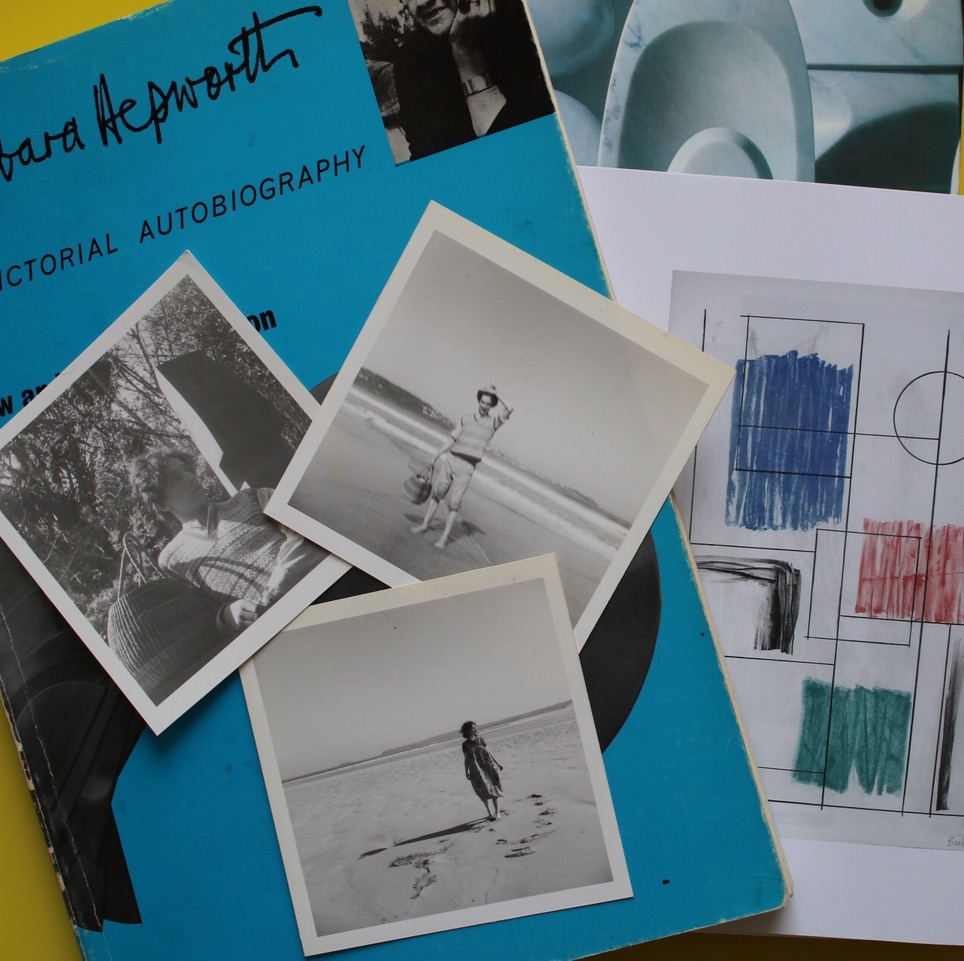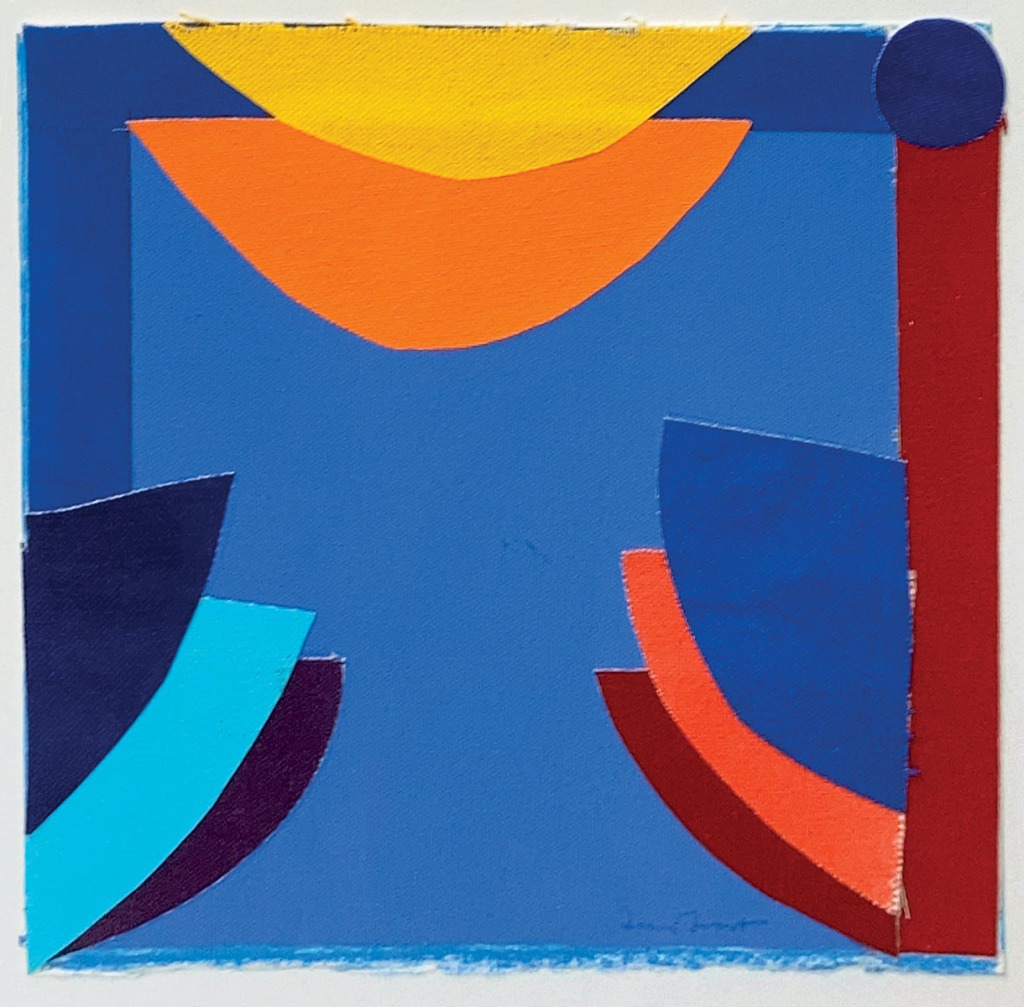I’ve had an Instagram account since 2015, but it’s been a pretty on–off affair. This was my first consistent attempt to post regularly, using the posts to tell a story. As a writer, living and working with words, Instagram originally attracted me as a visual alternative, a kind of scrapbook/diary, so I took my cue for the takeover from Barbara Hepworth’s Pictorial Autobiography – a book @felicitymara and I had bought as it happens, on my first ever visit to St Ives. Here is a selection from those 14 posts.
Saturday 4 April

On a hot blue April morning, the tide far out, we walked from the old vegetarian hotel on Lelant Saltings across the sands. It felt like we were the only people to find our way to Trewyn Studio that day. After exploring the garden, sitting in the suntrap greenhouse with its slightly grubby plaster sculptures and musty backnote of Cornish damp, we joined the Easter holiday crowd in the harbour. On a wall by the amusement arcade, someone had hooked a plus-sized wooden palette, inscribed in capital letters ‘ARTIST AT WORK’. St Ives, in a nutshell …
Thursday 6 April

Sandra Blow made this collage the same year my book on her came out. I’d spent much of the previous year researching and writing – including regular meetings with Sandra at her studio in a former carpet warehouse in St Ives. During that time, she was going through a break-up. As a result, conversations I’d carefully plotted along the lines of art-biographical interviews would quickly veer off-piste into more personal matters – not that I could match Sandra’s experience here.
She was an artist in that European lineage of consummate arrangers and animators of two-dimensional space – a rare gift, even among artists. It sometimes felt almost magical: she could drop an off-cut of coloured paper or hessian on the floor, and it would fall ‘right’ in relation to the visual field. You get a sense of that in this little collage.

Thursday 20 April
Back in 2006, I was about to start work on the book that became The St Ives Artists: A Biography of Place and Time, when I had a dream in which Peter Lanyon appeared. It was on a beach, towards the end of a sunny day, and he was happily mucking about by some rocks. What I remembered on waking was a feeling of great warmth and humour. ‘Golden’ was the word that came to mind.

Then in 2016, looking for illustrations for @lhartbooks second edition of the book, I was shown this photograph – a surreal family moment caught on the wing by Andrew Lanyon, who kindly let me reproduce it on the back cover. I’d never seen the photo before, but it could have been a black-and-white still from the dream, though by this point ten years had passed. What Peter Lanyon was doing round the back of Carn Brea in 1960 I don’t know, but – now you’ve seen Andrew’s photo – you can picture him.

Peter Lanyon, Back of Carn Brea, charcoal and gouache, 1960
Friday 5 May

Terry Frost, Malaga Blue, Yellow and Orange, acrylic and canvas collage on card, 1999
‘Just to think in terms of colour,’ Terry Frost told his students at Reading University, ‘is enough to set the soul alight. This is colour without shape – in the spirit.’ In 2000, not long after Frost made this small, bright collage in canvas on card, he turned 85. I interviewed him for Art Review in his studio high above Newlyn. Chatty but a shade despondent, he showed me the stacks of large, unsold abstract paintings leaning against the walls. As far as the art market was concerned, he said, abstraction was ‘dead’.
I met many of those paintings again, on gallery walls and in auction reports, this time with four or five zeros attached. ‘People pay a lot for the work when the painter himself is dead,’ as Vincent van Gogh observed to his sister in 1888. Plus ça change.
Like others of his generation, who had to get through six years of war before they could start their adult lives, Frost had a marvellous capacity to take real delight in things that cost nothing – a fine sunset, a good hot cup of tea – and to share those pleasures. I liked him for that.
Monday 8 May
Patrick Heron avoided descriptive titles, instead titling his pictures with the dates on which they were made or finished. And you can see the point. If he’d called this print, say, Field of Dreams or Pink Moon, instead of January 1973, you might want to make the picture fit a story rather than letting the shapes and colours do their own wordless work.

Patrick Heron, January 1973: 12, screenprint, 1973
But days, months and years have stories too. What else was happening half a century ago, in January 1973? Quite a lot that strikes a chord today, it turns out. In the USA, there was the landmark Roe v. Wade legal judgement on abortion, and over here, celebrations as Britain finally became a member of the European Union. Patrick Heron, a passionate Europhile, must have been delighted.

‘European Communities 1973’, commemorative stamps designed by Peter Murdoch, RCA, 3 January 1973
This is the last day of the show – and also publication day for the new paperback edition of The St Ives Artists: A Biography of Place and Time. @lhartbooks have, once again, done a beautiful job, with a cover based on Bryan Wynter’s Meander II – a visual exploration of the complex ways in which patterns of water flow shape our environment and our lives.
To buy a copy, visit @stivesbookseller or order online from @lhartbooks, @blackwellbooks and other major bookstores (rrp £19.99).
